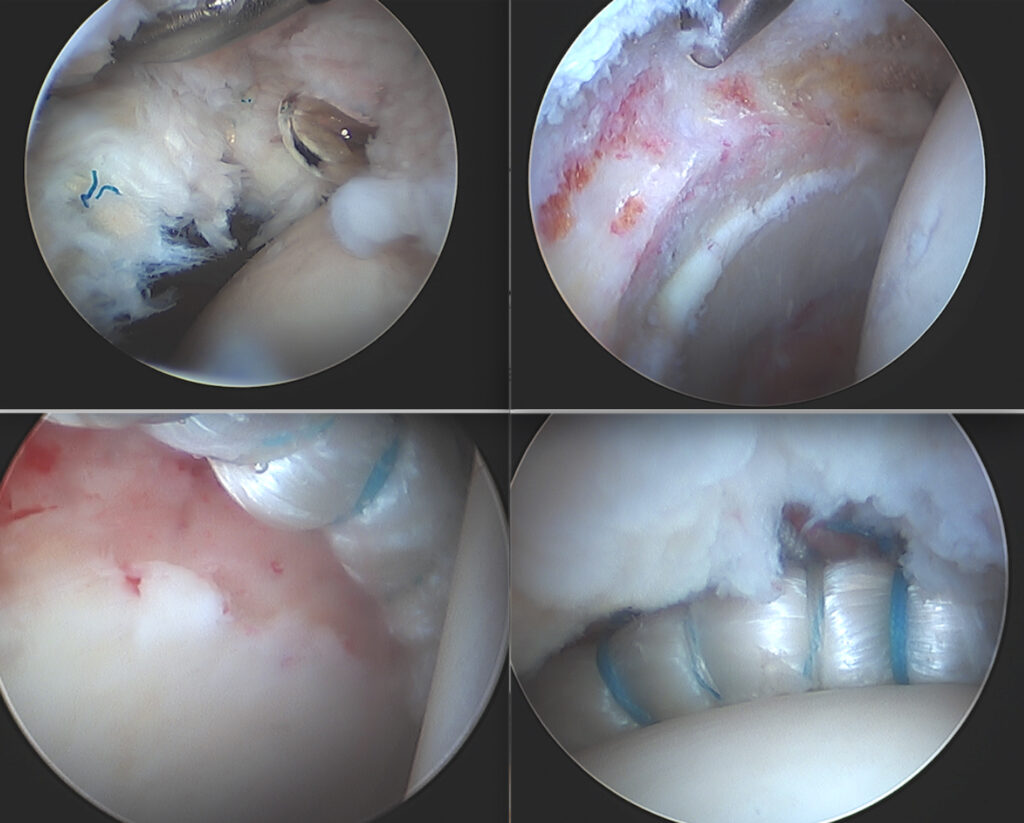When the labrum is torn and requires surgical repair
This procedure is carried out using bone anchors and suture material, to bring the torn labrum back to the rim of the socket where it will heal in an anatomic position and reconstitute the suction seal on the ball. Following labral repair, patients with hip impingement are treated with a reshaping of the hip joint using a high-speed burr to remove abnormal bone. Patients with hip instability are evaluated for additional realignment procedures (PAO and/or DFO) to restore normal biomechanics to the hip joint and protect the labrum and surface cartilage from re-injury.
Labral repair is the first line treatment for a torn labrum. However, in order for the repair to have a high likelihood of successful healing the labral tissue must be robust, it must have adequate blood flow, and it must be without significant degeneration or calcification. When these criteria are not met, or a previous attempt at repair fails, there is an alternative method of reconstituting the labral seal and preserving native labral function – with labral reconstruction.
Labral reconstruction involves removing the damaged labrum and replacing it with a tissue allograft (from cadaver tissue) designed to emulate the native labrum in size, characteristics, and function. According to our experience, which is aligned with published series from most high volume hip surgeons, the need for labral reconstruction is around 1 every 15 patients (7%). The procedure can be carried out with minimally invasive hip arthroscopy and the literature supports excellent outcomes at short term, with reliable healing and incorporation of the graft. As is the case for labral repair, the reconstruction alone will not address the underlying problem and must be supplemented with appropriate bony work to reconstitute the normal anatomy and biomechanics of the hip joint.
